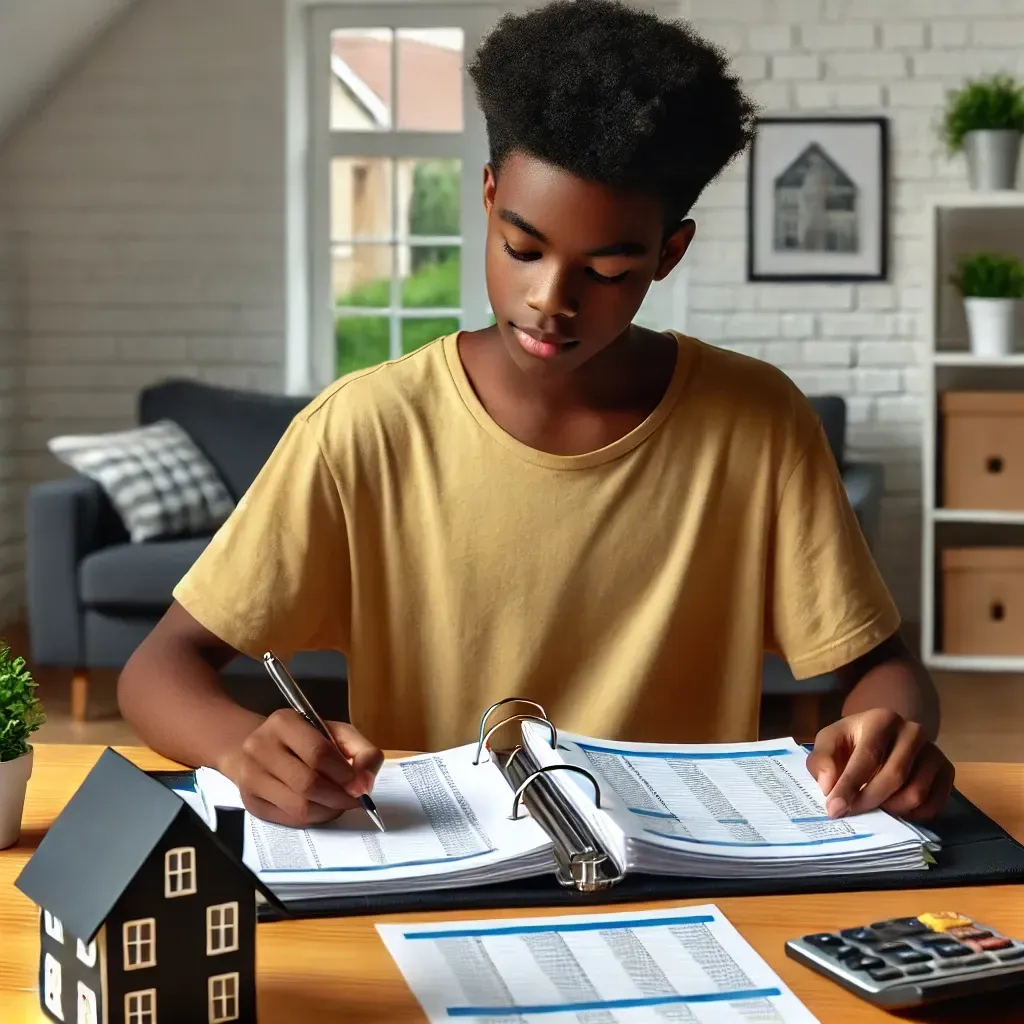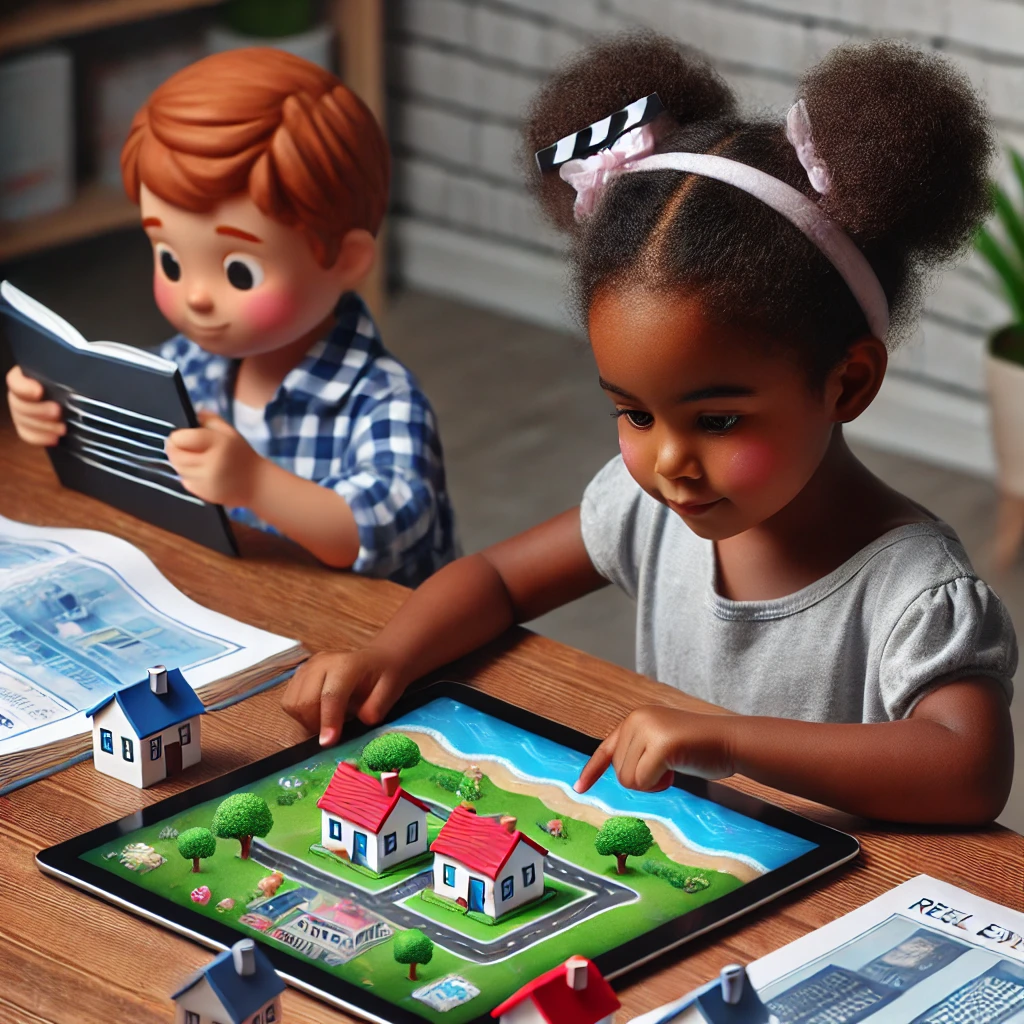
What Is Equity? Teaching Kids the Power of Home Appreciation
If you’ve ever heard adults talk about building wealth through homeownership, they’re often talking about equity.
But what exactly is equity, and why is it so important?
Equity is the portion of a home that a homeowner truly owns. It grows over time as:
✅ The home’s value increases (appreciation)
✅ The homeowner pays down their mortgage
Understanding equity helps kids learn:
✅ Why buying a home is a great investment
✅ How home values change over time
✅ How real estate builds wealth for families
✅ How investors use equity to buy more properties

By the end of this guide, your child will have a kid-friendly explanation of equity and home appreciation—and they’ll start seeing real estate as a powerful tool for building wealth!
Step 1: What is Equity?
1. Equity is the Value a Homeowner Owns in Their House
When someone buys a home with a mortgage (a loan from the bank), they don’t fully own the home yet—the bank does!
Equity is the difference between what a home is worth and how much the homeowner still owes on the mortgage.
📍 Example:
A homeowner buys a house for $300,000.
They put $60,000 down (this is their initial equity).
They borrow $240,000 from the bank.
So, the homeowner owns $60,000 of the home’s value (their equity) and owes $240,000 to the bank.
💡 Kid-Friendly Explanation:
Ask: "If you buy a $100 bike but only pay $20 upfront, how much do you still owe?"
Explain: "Just like with a bike, homeowners make payments over time and gain more ownership (equity)!"
2. How Equity Grows Over Time
Equity increases in two main ways:
✅ Home appreciation (the home’s value goes up over time)
✅ Paying off the mortgage (less money is owed to the bank)
📍 Example:
A home bought for $300,000 may be worth $400,000 in 10 years.
If the owner still owes $200,000 on their mortgage, their equity is now $200,000.
💡 Kid-Friendly Activity:
Have kids pretend to buy a house and track their equity growth as the value increases.
Step 2: What is Home Appreciation?
1. Home Appreciation Means the House Becomes More Valuable
Home appreciation happens when a house increases in value over time due to:
🏗 Neighborhood improvements (new parks, businesses, schools)
💰 More people wanting to live in the area (higher demand)
🏠 Home upgrades (remodeling, new features added)
📍 Example:
A house bought for $250,000 in 2010 might be worth $450,000 in 2024.
The homeowner gains $200,000 in appreciation!
💡 Lesson for Kids:
"Just like rare trading cards or sneakers become more valuable over time, homes do too!"
2. Factors That Affect Home Appreciation
🏡 Location – Houses in popular cities appreciate faster.
🏗 New Developments – New businesses, schools, and public transportation raise home values.
🏠 Home Upgrades – Adding a new kitchen or bathroom increases the value.
📍 Example:
If a new shopping mall and park are built near a neighborhood, home prices go up because more families want to live there.
💡 Kid-Friendly Activity:
Take kids on a neighborhood tour and point out places that make homes more valuable.
Step 3: How Homeowners Use Equity to Build Wealth
1. Homeowners Can Sell for a Profit
Once a home gains equity, the owner can sell it for more than they bought it for and make a big profit.
📍 Example:
A house bought for $200,000 appreciates to $400,000.
If the homeowner only owes $100,000, they keep $300,000 in profit when they sell!
💡 Lesson for Kids:
"Imagine if you bought a toy for $10, but someone later offers you $50 for it!"
2. Homeowners Can Use Equity to Buy More Properties
Investors borrow against their home’s equity to buy rental properties and build more wealth.
📍 Example:
An investor’s home gains $100,000 in equity.
They use that money to buy another home and rent it out for extra income.
💡 Lesson for Kids:
"Homeowners use their house like a bank to buy more real estate and grow their wealth!"
Step 4: Why Renting Doesn’t Build Equity
1. Renters Pay a Landlord Instead of Owning Property
When someone rents a home, they pay money to a landlord every month instead of building equity.
📍 Example:
A renter pays $1,500 per month for 10 years.
They spend $180,000 on rent but own nothing at the end.
💡 Lesson for Kids:
"Owning a home lets you keep your money, while renting means you’re paying for someone else’s home!"
Step 5: Fun Ways to Teach Kids About Equity & Appreciation
🎲 Game 1: Home Value Tracker
Give kids a pretend home price and increase it each year to show appreciation.
🏡 Game 2: Buy vs. Rent Challenge
Compare paying rent for 10 years vs. paying a mortgage for 10 years.
💰 Game 3: Real Estate Investor Role Play
Have kids pretend to buy homes, track equity, and reinvest profits.
Conclusion: Teach Your Kids About Real Estate & Equity Today!
By understanding equity and appreciation, kids will:
✅ Make smarter financial decisions in the future
✅ Learn how real estate builds wealth
✅ Understand why homeownership is a great investment
And the best part? You don’t have to figure it out alone!
🚀 Get The Real Estate Bundle for Families at 96% OFF! 🚀
We’ve created the ultimate real estate guide for families who want to teach kids about equity, appreciation, and smart investing.
For a limited time, you can grab The Real Estate Bundle for Families at an incredible 96% discount! Inside, you’ll get:
🏡 Step-by-step real estate investing guides
📈 How homeownership builds wealth
💰 Smart investing strategies for kids & families
🔥 And much more!
👉 Don’t miss out! Click here to secure your bundle today:
🔗 www.childrentowealth.com/realestate
This offer won’t last—start teaching your kids real estate today! 🚀💰🏡
